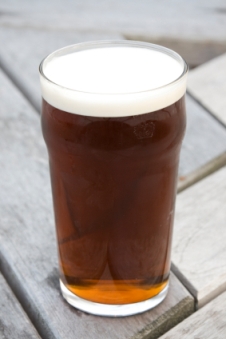 Last week in part one of this series, we covered how to calculate apparent attenuation and what the difference is between real and apparent extract. This week we’ll take a look at apparent and real attenuation, and how to use attenuation in designing beer recipes.
Last week in part one of this series, we covered how to calculate apparent attenuation and what the difference is between real and apparent extract. This week we’ll take a look at apparent and real attenuation, and how to use attenuation in designing beer recipes.
Apparent vs Real Attenuation
Now that we understand real-extract, what is the difference between real and apparent attenuation? Well real attenuation is nothing more than the attenuation calculated using the real extract instead of the apparent extract. Real attenuation is the actual attenuation of the beer during fermentation, accounting for the fact that the hydrometer reading was skewed when measuring the apparent attenuation (FG).
So which is right? Well obviously the real attenuation gives the accurate number for the percentage of extract in the wort that actually fermented. However, by convention, if you hear a brewer talking about the attenuation of their beer they are almost always talking about the apparent attenuation of their beer. Why? Because it is easier to measure the apparent extract (FG) of your beer, and its easier to calculate the apparent attenuation. Brewers like to brew more than they like to use calculators so they will quote apparent attenuation first.
Using Attenuation in Recipe Design
Yeast suppliers provide apparent attenuation ranges for their beer in their data sheets, so you can look up apparent attenuation ranges for your favorite yeast. Generally yeasts with higher attenuation will produce a drier, cleaner, less malty finish.
However you may also notice that high attenuation yeasts almost always have lower flocculation (flocculation refers to how quickly the yeast falls out of the beer). There is a reason for this – high flocculation yeasts will start to drop to the bottom of the fermenter before they have had a chance to consume all of the fermentable sugars, leaving a sweeter, more full bodied beer. So looking at both attenuation and flocculation is important depending on the style you are brewing and how much time you have to age it.
High attenuation yeasts (with low flocculation) will give you that dry, clean, fully fermented finish, but they may take a long time to clear completely unless you use fining agents. Low attenuation yeasts (high flocculation) will result in a fuller bodied, more complex beer as they may not fully ferment complex sugars, but they will clear more quickly.
If you survey yeast data sheets, you will also notice that lagers almost always have a higher average attenuation than ales. This is a fundamental difference between the ale and lager yeasts – ale yeasts can not fully ferment some forms of maltose sugar (specifically maltotriose), while lager yeasts can. This is why many lager yeasts product a higher attenuation beer with few esters and a cleaner finish.
Selecting the right yeast with appropriate attenuation to match you beer style is important. Don’t use a high attenuation yeast if you are brewing a complex English ale. Similarly a low attenuation yeast would be a poor choice for a clean style like a Bavarian Pilsner.
Troubleshooting
I find that occasionally I have low attenuation for a batch – even lower than I would expect from a given yeast – indicating incomplete fermentation. The causes for this can be varied. Low attenuation is a common problem with many extract beers. Often it is an indication of using old or partially oxidized malts or poor quality yeast – try to get the freshest malt extract you can buy.
For all grain brewers, low attenuation can sometimes be caused by incomplete conversion during the mash. Other common causes include not pitching sufficient yeast (i.e. not using a starter), not maintaining proper temperature during fermentation, and poor aeration of the wort before fermentation. When I find a finished batch with low attenuation, I like to go back and look at my brewing process to try to determine where I went wrong.
Thank you for joining me on the BeerSmith Home Brewing Blog. Don’t forget to subscribe to our weekly brewing newsletter, and have a great brewing week!
Some boilers are more prone to scaling up than other
folks: combi boilers andd thrmal retailers for example. The cleaners could maintain the cleanliness and
hygiene of your office from thee cubicles, office furniture, floors, windows, pantry to
the washroom area. Saturate with sour milk
(or lemon juice) and rube with salt.